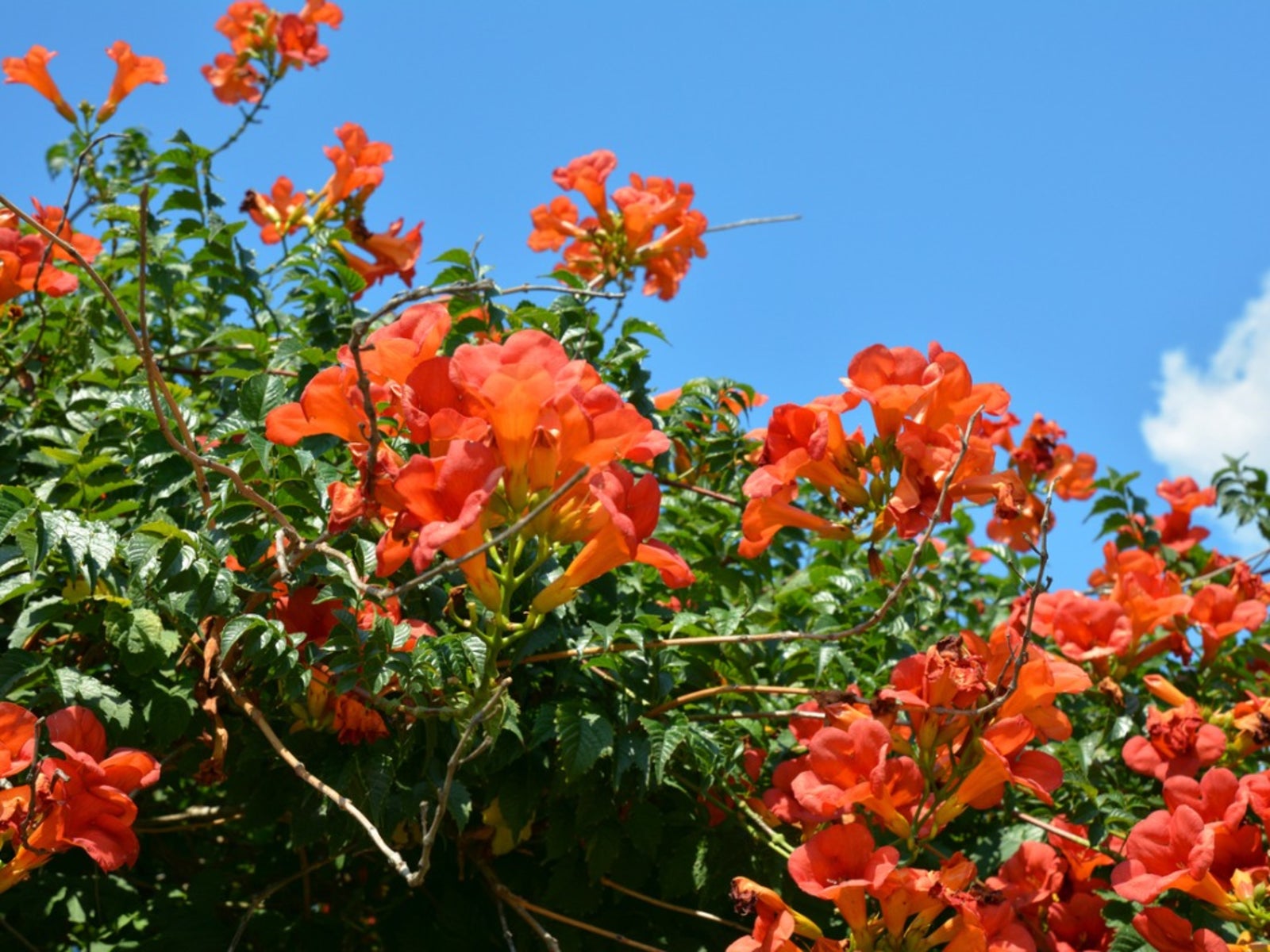Trumpet Creeper Ground Cover: Can Trumpet Vine Be Used As Ground Cover


Trumpet creeper flowers are irresistible to hummingbirds and butterflies, and many gardeners grow the vine to attract the bright little creatures. The vines climb and cover trellises, walls, arbors, and fences. How about the bare ground? Can trumpet vine be used as ground cover? Yes it can. Read on for information about trumpet creeper ground cover.
Can Trumpet Vine Be Used as Ground Cover?
Trumpet vine plants grow so fast that it’s easy to imagine the vines as ground cover. If you just have a small area you would like to plant in ground cover, trumpet creeper might not be a good pick though. Trumpet creeper needs room to grow. Using trumpet vines for ground cover only works if the plants have room to grow and spread. Given sufficient space, trumpet creeper ground cover spreads fast and is great for erosion control.
Using Trumpet Vines for Ground Coverage
If you are thinking of using trumpet vines for ground cover, remember that they like to climb. If you plant the vine as a ground cover, it will cover the ground quickly, but it will climb anything that crosses its path the first chance it gets. One problem with using trumpet vines as ground cover is that many varieties tend to be aggressive plants. That means they can become invasive if not properly managed. Some, including trumpet creeper, are considered invasive weeds.
Growing Trumpet Creeper Ground Cover
Trumpet creeper ground cover is easy to grow and it grows almost anywhere. It thrives in USDA plant hardiness zones 4 through 9/10, and tolerates wet or dry soil, including sand, loam, and clay. The showy flowers of the trumpet creeper appear in clusters of four to a dozen, and are the feature that attracts butterflies and hummingbirds. Your plants will have considerably more flowers if you plant your trumpet creeper ground cover in full sun. If you want to try using other vines for ground cover, many of them fulfill this role nicely. You might try winter jasmine, clematis, or confederate jasmine in warmer zones, and Virginia creeper or sweet potato vines in cooler regions.
Gardening tips, videos, info and more delivered right to your inbox!
Sign up for the Gardening Know How newsletter today and receive a free copy of our e-book "How to Grow Delicious Tomatoes".

Teo Spengler is a master gardener and a docent at the San Francisco Botanical Garden, where she hosts public tours. She has studied horticulture and written about nature, trees, plants, and gardening for more than two decades. Her extended family includes some 30 houseplants and hundreds of outdoor plants, including 250 trees, which are her main passion. Spengler currently splits her life between San Francisco and the French Basque Country, though she was raised in Alaska, giving her experience of gardening in a range of climates.
-
 How To Make A Bouquet Garni Or Herb Bundle For Cooking
How To Make A Bouquet Garni Or Herb Bundle For CookingIf you’re a great cook, you may have made an herb bundle before. If this is a new idea, learn how to add sparkle and interest to your dish with a bouquet garni.
By Amy Grant
-
 ‘Coral Charm’ Peony Care For Sublime Semi-Double Peonies With Lush Salmon Pink Flowers
‘Coral Charm’ Peony Care For Sublime Semi-Double Peonies With Lush Salmon Pink FlowersPeonies are known for their soft baby pink or magenta tones, but if plushy coral blooms are your thing, here’s our guide to the ultimate ‘Coral Charm’ peony care
By Tonya Barnett